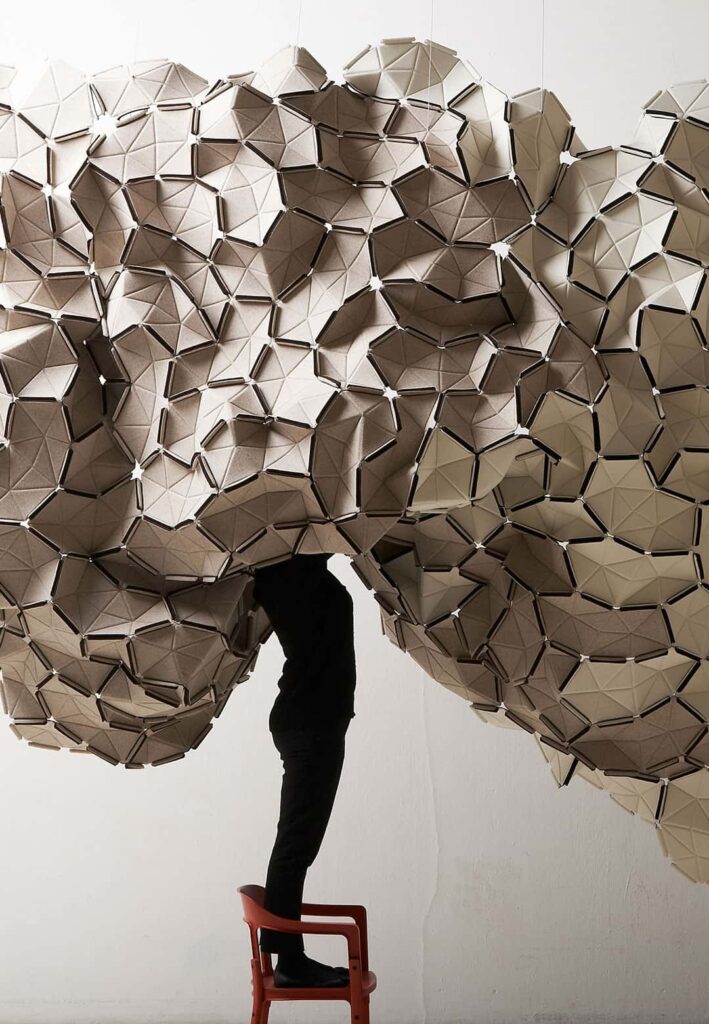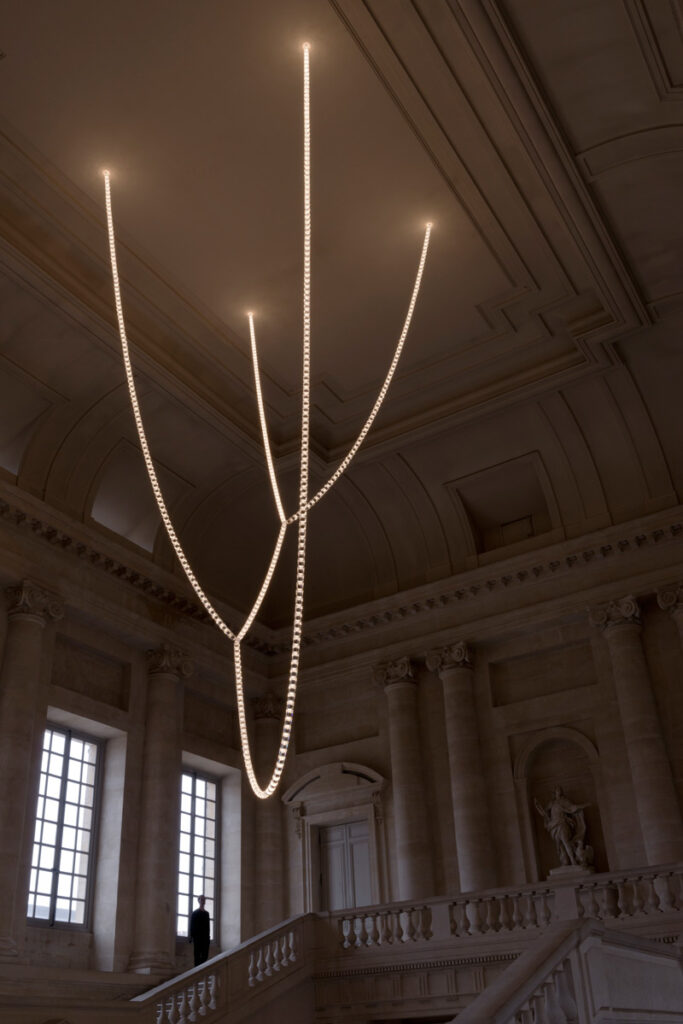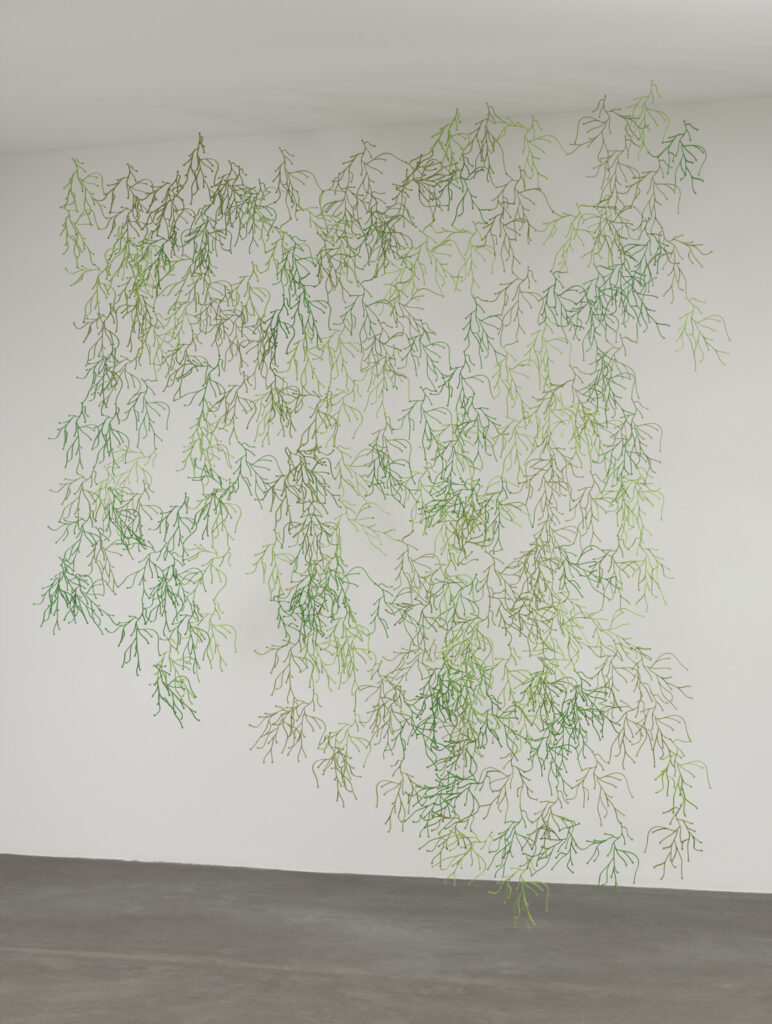
“I vividly remember my first encounter with the work of Ronan and Erwan Bouroullec, around 2001 at Galerie kreo in Paris. It conjured up a world so unique and personal; I was immediately drawn to it. Over the last 25 years, my wife Delphine and I have been fortunate to collect and, more importantly, live with a wide range of their works… One of the most amazing experiences in my 30-year career was working with them on a commission for the Tiffany & Co’s flagship in New York. The six-story lighting installation literally took my breath away when they presented the concept to me. Seeing their creative process firsthand has made me appreciate their work even more.” —
Reed Krakoff, designer and collector
Ronan Bouroullec’s first time on an airplane was around the turn of the millennium, when he was invited by Giulio Cappellini to visit the headquarters of the eponymous furniture manufacturer near Milan. The trip was a momentous point of departure, leading not only to a successful series of Bouroullec designs for Cappellini—the Spring Chair (2000), Cloud Bookcase (2002), and Basket Sofa (2005), to name a few—but also to a magnificent career for the French designer together with his studio partner and brother Erwan.
Within a few years of that plane ride, the Bouroullec brothers had completed high profile, critically acclaimed commissions for Issey Miyake, Vitra, and Galerie kreo. The early opportunities they received from Vitra’s Rolf Fehlbaum, in particular, ensured the duo were well on their way to becoming the global design phenomenon that they are today. In the two decades since, they have applied their thoughtful approach to the creation of furniture, lighting, textiles, products, interiors, jewelry, installations, and, most recently, works on paper. Along the way, they’ve built an enviable client roster, including nearly all of the major design brands, like Artek, Alessi, Flos, Kvadrat, Kartell, Ligne Roset, Magis, Iittala, and Samsung.
As my recent Materials and Furniture: The Legends guest, Ronan shared highlights from his studio’s portfolio and process, which elucidated the widespread appeal of their work. Bouroullec designs share a unique mix of characteristics: intriguing innovation, elegant restraint, and amiable charm free from extraneous ornamentation. Their forms, often imbued with subtle references to French modernism, have an infectious charisma that radiates out and brightens the ambiance around them.
Often identified as a neo-rationalist, Ronan looks at the world with a kind of distance. He avoids casting his attention toward works from the past, whether created by his own studio or by antecedents from design history. The perspective, he feels, stimulates creativity, promotes originality, and preserves purity. Determined never to repeat himself or anyone else, Ronan is on an eternal quest for the new.
Born in 1971 and 1976 respectively, Ronan and Erwan were raised in picturesque Quimper, Brittany, in northwest France. Surrounded by farmland and tradition, teenage Ronan discovered his passion for design through magazines. Designers Ettore Sottsass and Philippe Starck, in particular, captured his imagination, inspiring him to enroll in the École nationale supérieure des arts décoratifs at age 15. By 18, he had organized his first design exhibition. Erwan a few years later enrolled in École des Beaux-Arts in Cergy-Pontoise to study art, but he began to collaborate on his brother’s design projects before graduating. Ronan and Erwan officially joined forces and launched Studio Bouroullec in Paris in 1999.
Today, Bouroullec designs are used by millions of people around the world and have been acquired by prestigious institutions, such as Centre Pompidou, Les Arts Décoratifs, Museum of Modern Art, Art Institute of Chicago, and Design Museum London. Even so, Ronan maintains the same humble, inquisitive spirit he had back in Brittany.
In 2013, Paris’ Les Arts Décoratifs celebrated the Bouroullecs’ significant contribution to 21st-century design culture through an ambitious, 1000-square-meter retrospective, entitled Momentané. Seizing the chance to showcase their vision like never before, Ronan and Erwan transformed the museum into a dazzling, immersive gesamtkunstwerk. Among the show’s many highlights were a series of monumental curtain walls composed of their ingenious partition modules, the green seaweed-like Algues for Vitra (2004) and the soft, woolen Clouds for Kvadrat (2009).
The Bouroullecs are known for their refined yet functional mass-produced product design for international brands, but fewer may be aware that much of their work for industry has its roots in the limited-edition collections they develop for Galerie kreo, in the lab-like atmosphere cultivated by the gallery’s owners Clémence and Didier Krzentowski. Standouts from the collaboration include the Lit Clos Sleeping Cabin (2002), Chaînes Lights (2006), Urumi Desk Light (2009), and Geta Black Coffee Table (2014)—all museum-quality pieces produced by outstanding artisans. While playing a vital role in advancing 21st-century design thinking, Ronan believes that the political role of designers today is to support, protect, and preserve traditional handcraft skills.
Among their most iconic designs, the Chaînes Lights they created for Galerie kreo exemplify the Bouroullecs’ talent for originating novel modular forms that can be infinitely customized by end users. In this case, the light fixtures comprise bell-shaped components made of ceramic, anodized aluminum, or plaster, which can be linked into strands of any length and suspended vertically or horizontally according to the parameters of the space—reminiscent of pearl necklaces at an architectural scale.
In 2013, a more elaborate iteration of the Bouroullecs’ Chaînes Lights was commissioned by Château de Versailles, the historic site’s first permanent installation of a contemporary artwork. To realize the Gabriel Chandelier as it is called, Ronan and Erwan worked with Swarovski to craft 400 clear crystal modules. The resulting installation is sublime—ethereal yet forceful; harmonious yet transformational in relation to the grandeur that surrounds it.
Last month, Ronan closed his exhibition at the Hôtel des Arts in Toulon, Daily Drawings, which presented his abstract drawings and sketches for the first time outside of a design context. Later this year, Phaidon will publish Ronan Bouroullec: Day After Day, a monograph of the daily photographs he takes as a kind of personal, visual diary.
Belying his reputation as a neo-rationalist, Ronan’s two-dimensional expressions seem to reveal a more spontaneous, intuitive side. In fact, this may be his superpower: marrying intellect and emotion to draw audiences into a personal relationship with his studios’ work.
“An object in a room,” Ronan said of how he and Erwan approach their practice, “is like a teabag in a glass of water. It has the power to generate the entire atmosphere.” This article was published today in Forum Magazine by Design Miami.
Look out for Parts II and III of Ronan Bouroullec’s Daily Drawings exhibition, both opening in June to coincide with Design Parade Hyères: Hand to Clay (La main à l’argile) at Galerie du Canon and Recent Productions (Productions récentes) at Villa Noailles.


